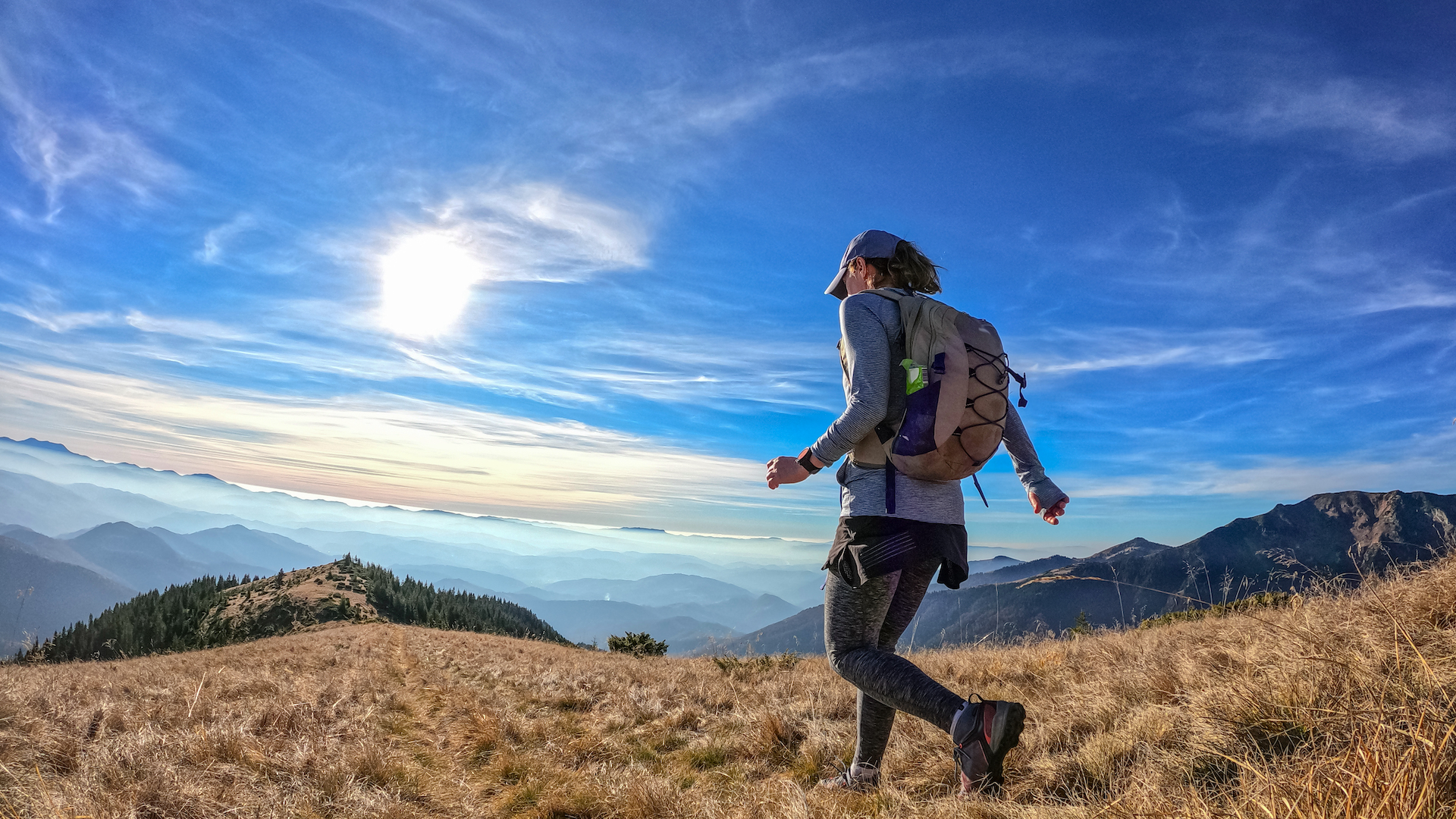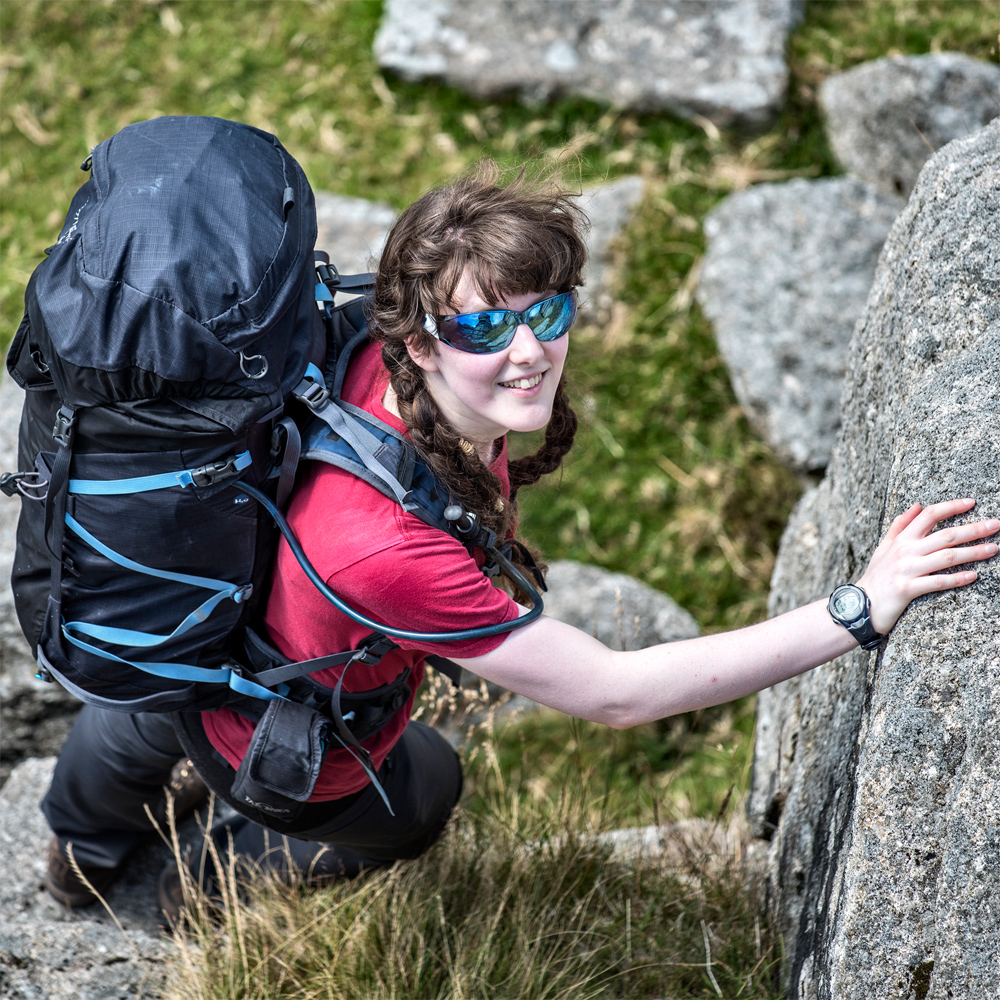Types of backpack: your best options for carrying that weight
We help you choose, from various different types of backpacks, which bag is right for you

There are many types of backpack – so many, in fact, that it can feel completely overwhelming. Like getting lost in an endless maze of aisles and options, until you find yourself screaming, “I just want to carry things on my back!” Luckily we’re here to help, like your own personal shopper to help you navigate through all the types of backpack to find the perfect one for you.
Now, there are many ways to subdivide backpacks. We could split them up by shape or volume, whether they’re waterproof or whether they come with pretty little reflective toggles and a choice of five colours. But we’re going to stick to the most practical and talk about types of backpack by activity. The shape, size and construction will come into it, but first and foremost decide what kind of adventures you want to take your backpack on.
Let's get started...
Day bags and hiking backpacks
The best hiking backpacks range from tiny, say 15-20 liter packs that fit a spare coats and a sandwich, right up to 50L+. Past about 40L, though, and you’re straying out of the realms of a daypack and into multi-day hiking or trekking. Hiking backpacks are usually made of strong, fairly thick fabric that isn’t particularly waterproof. They often have a rain cover to do something about that, but they’re not very effective really. Lots of zips, compartments, side pockets and waist straps are a standard in these types of backpacks. Smaller ones may have big mesh pockets either side for water bottles. Many have an inside pockets and a small holes especially for a water bladder.
Expedition bags for backpackers
This is a big old backpack. Ranging from 55L right up to 80L or more, you can fit your life in these bags. Designed for carrying heavy equipment over multiple days, you can expect lots of padding on the shoulder and waist straps. These rucksacks tend to be simpler in construction than day bags: typically a single huge compartment, maybe with a lid pocket or small side pockets on the outside. It’s common to have roomy pockets in the waist band for snacks and other small easy access items. Again, you’ll usually have a dedicated flap and exit hole for using a hydration bladder. Although such big bags are usually designed with expeditions in mind, all their features are equally useful for backpackers and thru-hikers. (It’s still a good idea to pack as lightly as you can though!)
Climbing backpacks
When climbing you’re going to get up close and personal with some rock faces. So the types of backpack specifically for climbing are designed to be durable, in case they rub or snag on a sharp rock. But they’re also lightweight - because you don’t want to give gravity any encouragement. The backpacks are narrower than a hiking rucksack, to stop them from getting in the way while you climb. Also, they need to be sturdy enough to carry heavy climbing equipment and a rope. Not much good if you pack a bag up with all your gear, pick it up and it all falls out through the bottom. And remember, you’ll need to wear the bag on top of a harness: many climbing backpacks don’t have a waist strap for this reason. Those that do exist are often convertible.
Fastpacking backpacks
The line between running and walking is pretty blurry. Fastpacking is for people who want to go on a bit more of an expedition, but as a runner. So fastpacking backpacks are big enough to fit a small one-person tent or bivy kit and sleeping bag. But not as uncomfortable or clunky as a big hiking bag would be, if you tried to run with one. Basically, they’ve taken into account balance and bounce. These bags tend to have large, pocketed shoulder straps, like a hydration vest, with a wide waist band and big mesh pockets. Think like a cross between a day bag and a hydration vest. They’re made of a lightweight material and often come with flexible water bottles in the front pouches. Or you can add your own. You might also make use of this type of rucksack for a multi-day stage race or equivalent event. Bag sizes tend to be around the 35-45 liter mark and are generally very adjustable to help with comfort. There’s certainly more chance for rubbing and chaffing when you’re running.
Advnture Newsletter
All the latest inspiration, tips and guides to help you plan your next Advnture!
Backpacks for runners
Along a similar line, there are backpacks specifically designed for runners. Sure you could probably wear a fastpacking or a hiking bag while you’re running, but it’s probably not quite suited for your needs. The running equivalent of a day bag is even smaller – as little as 5 liters to 20 liters. Really only room for a lightweight waterproof running jacket and a cereal bar. There are also hydration vests, which are sort of backpacks, we guess. You wear them like a coat, with attachments at the front to make sure it all stays snug while you’re running. With the two front water bottle holders and the back pouch, you’d be amazed how much you can stuff into a vest. There have also been recent developments, trying to mix this small backpack style with a vest - imagine a rucksack that’s equally spread around you and you put on over your head. More like clothing than a traditional bag. Or, in fact, a literal vest –but made out of elasticated material and with plenty of useful pockets. Maybe this is the future of the running backpack.
Snowsports and alpine backpacks
Rounding off our list, there are types of backpacks that have snow sports – including skiing, snowboarding, ski touring, winter mountaineering, the works – in mind. Although these are generally like hiking or climbing backpacks, they’ll have extra straps and fittings on them to help you carry everything you need. For example, how about an extra flap to help stow your crampons away? Or bindings down each side of a rucksack so that you can easily slide your skis in and carry them uphill? Extra loops for ice axes and helmets are something to look out for too.
An adventure writer based on Dartmoor, England, Emily is an active member of Mountain Rescue and a summer Mountain Leader, but loves all things adventure – before her third birthday she had lived on three continents. Founder of Intrepid magazine, she works to help break stereotypes about women in the outdoors. Her expeditions have included walking all Dartmoor’s 119 tors in a single two-week outing, cycling to Switzerland and back, and riding the Rhine from source to sea.

